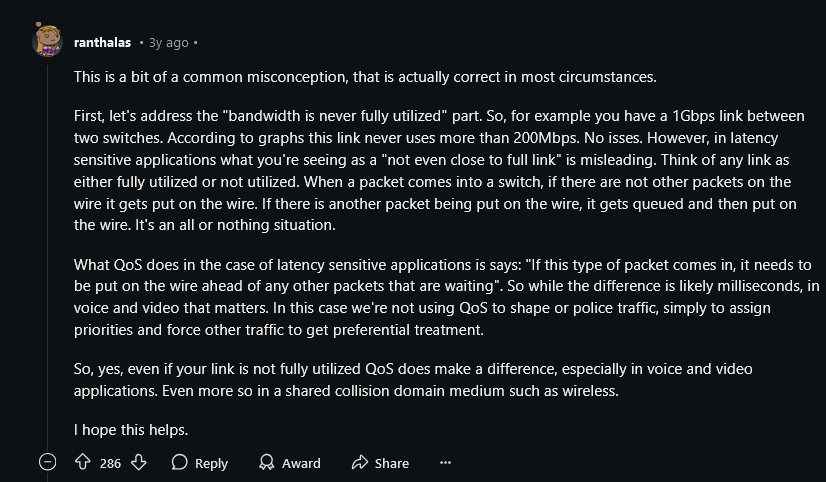Hello David
Speed and bandwidth are often used interchangeably to refer to similar things. When we use them loosely in conversation, what each one means often has to do with the context they are used in. But strictly speaking, they do have specific definitions.
Bandwidth is the maximum capacity of an interface, that is, the maximum amount of data that an interface can transmit. A Gigabit interface will have a bandwidth of 1000 Mbps or 1 Gbps.
Now speed is the rate at which data moves from one point to another. More specifically, it is the average rate at which data moves from one point to another over a period of time. (You’ll see why I make this distinction in a moment). It depends on a combination of factors, including the bandwidth of the link, latency, the quality of the transmission, as well as any QoS mechanisms that may be in place.
Now to address your specific questions:
To answer this question, we must first understand that at any point in time, an interface will either be sending data at its bandwidth rate or won’t send data at all. So a 1Gbps interface, at any instantaneous moment in time will be sending data at 1Gbps or won’t be sending data at all. So any “speeds” that are achieved that are smaller than the bandwidth are achieved due to intermittently sending data such that the average amount of data sent over a period of time (i.e. per second) is the speed.
So if you measure a speed of 100 Mbps on a GigabitEthernet interface, that means that over that one second of measured time, data is being transmitted for only 1/10th of a second resulting in an average of 100 Mbps.
So a 2Gbps link will transmit 100Mbps at the same average rate as a 1Gbps link simply because the 2 Gbps link will transmit for 1/20th of a second (on average) while the 1 Gbps link will transmit for 1/10th of a second, resulting in the same average speed.
If the speed is the same on two links of different bandwidth, then by definition the transmission will take the same amount of time, since speed is simply a measure of the rate at which data moves from one point to another.
Now let me throw in another definition which is also slightly different: throughput. I won’t answer it here, but I have created a NetworkLessons note on the topic. Take a look for more info.
I hope this has been helpful!
Laz

